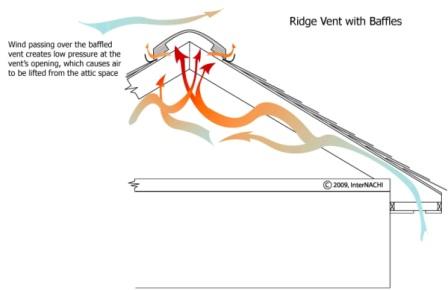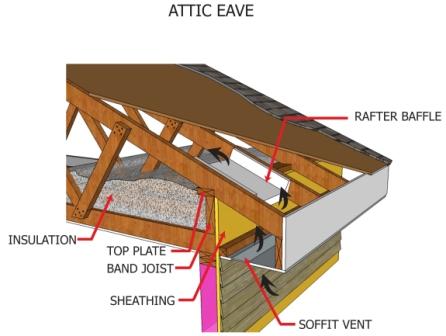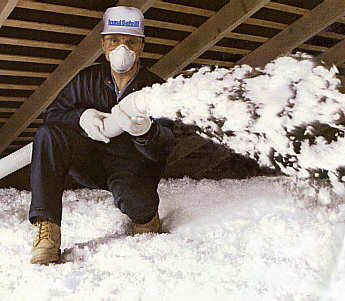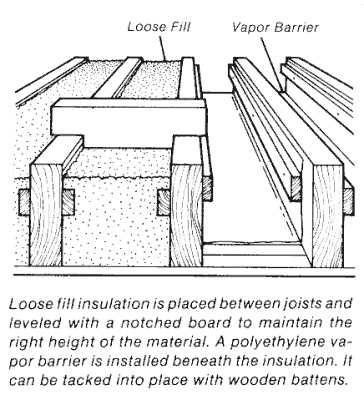by Nick Gromicko and Barry Fowler
According to the EnergyStar™ Program, heating and cooling costs can be slashed by up to 20% per year by properly sealing and insulating the home. Insulating the attic should be a top priority for preventing heat loss because as heat rises, a critical amount of heat loss from the living areas of the home occurs through an unfinished attic. During the summer months, heat trapped in the attic can reduce a home’s ability to keep cool, forcing occupants to further tax the home’s cooling system.

Step 1: Install Roof Baffles
In order to maintain the free flow of outside air, it is recommended that polystyrene or plastic roof baffles are installed where the joists meet the rafters. These can be stapled into place.

Step 2: Place Baffles Around Electrical Fixtures
Next, place baffles around any electrical fixtures (lights, receptacles, etc.), since these may become hot while in use. Hold the baffles in place by cross-sectioning the rafters with 2x4s placed at a 3-inch clearance around the fixture. Cut the polystyrene board to fit around the fixture and inside the wood square you have just created.
Begin by cutting long strips of fiberglass to measure, and lay them in between the joists. Do not bunch or compress the material; this will reduce the insulative effect.
If you are not planning to put in an attic floor, a second layer of insulation may be laid at 90º to the first layer. Do not lay in a second moisture barrier, as moisture could potentially be trapped between the two layers. This second layer of insulation will make it easier to obtain the recommended R-value. In colder climates, an R-value of 49 is recommended for adequate attic insulation. In warmer climates, an R-value of 30 is recommended. Fiberglass insulation has an R-value of rough ly 3 per inch of thickness; cellulose has an R-value of roughly 4 per inch, but it doesn’t retain its R-value rating as well as fiberglass.
ly 3 per inch of thickness; cellulose has an R-value of roughly 4 per inch, but it doesn’t retain its R-value rating as well as fiberglass.
If an attic floor is in place, it will be easier to use a blower to insert cellulose insulation into the spaces. The best way to achieve this is to carefully select pieces of the floor and remove them in such a manner that you will have access to all of the spaces in between the joists. Run the blower hose up into the attic. A helper may be needed to control the blower. Blow the insulation into the spaces between the joists, taking care not to blow insulation near electrical fixtures. Replace any flooring pieces that were removed.




